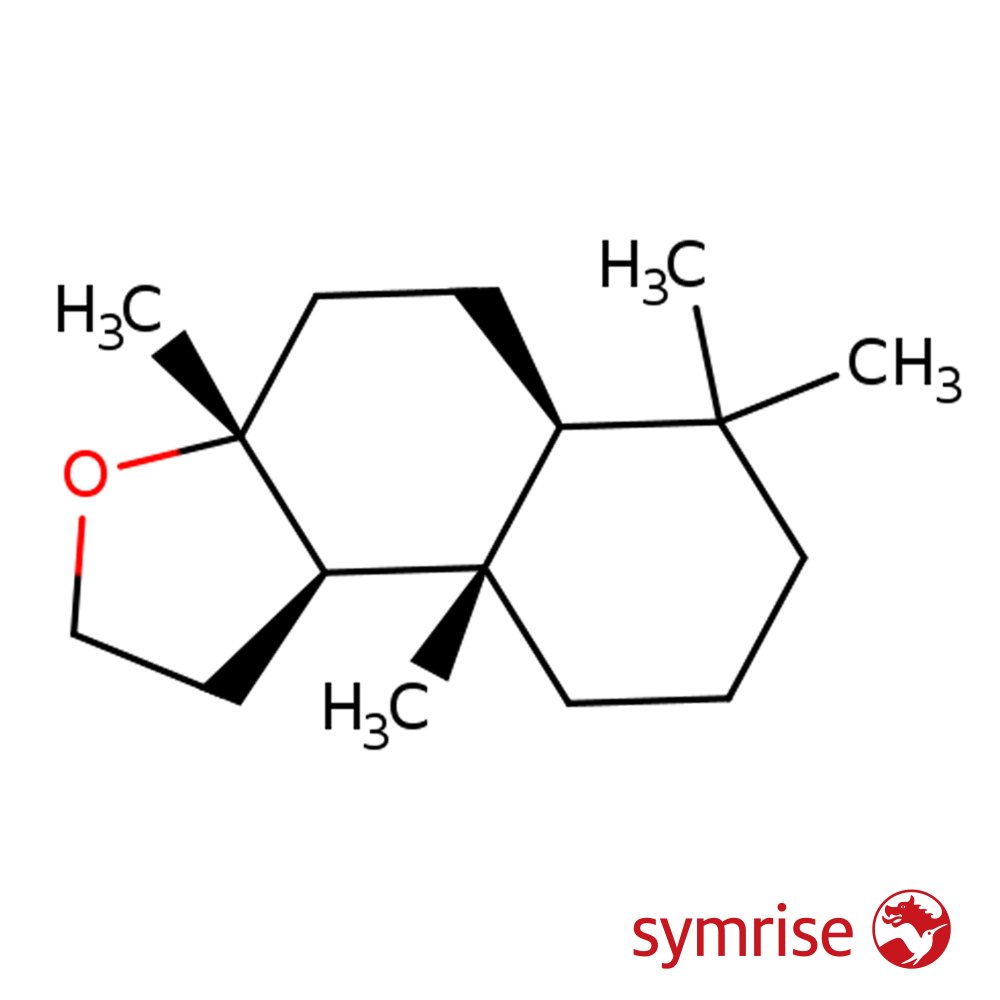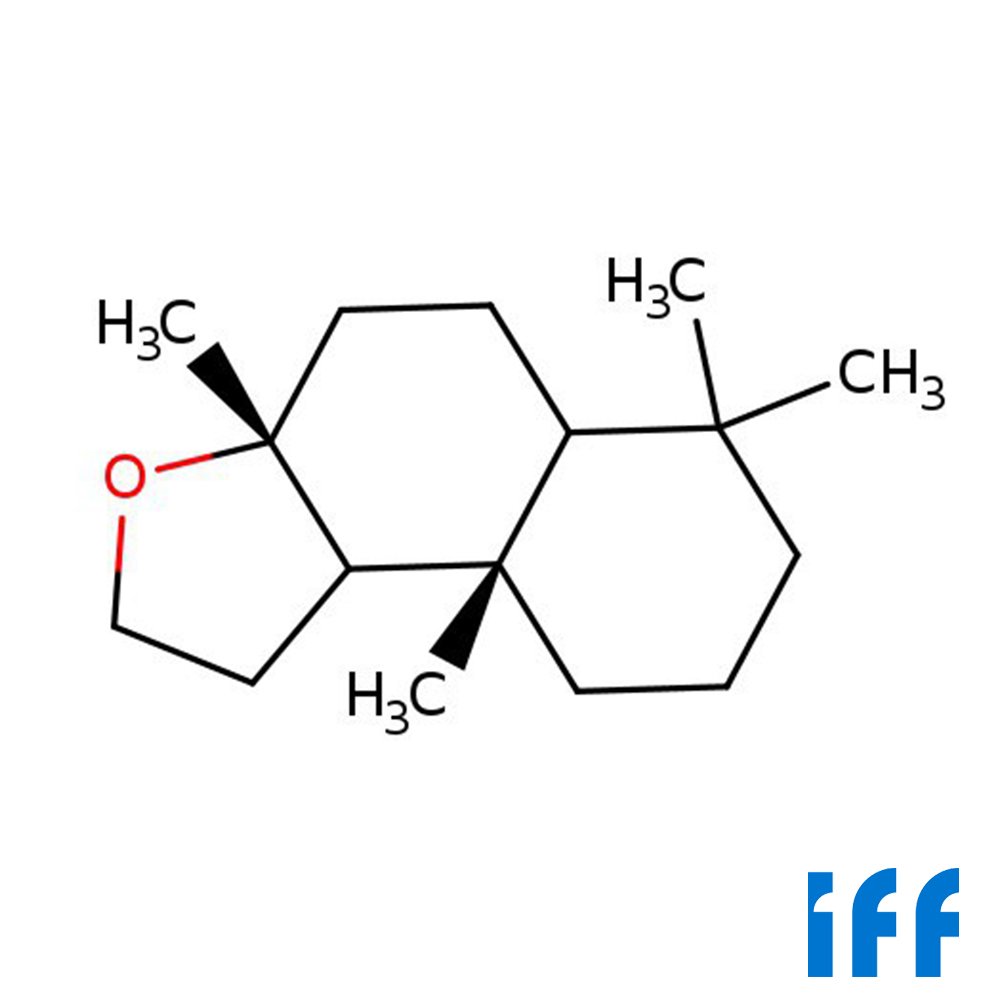Ambroxid Crist
Synthetic Ingredient For Perfumery
Ambroxide Crist, manufactured by Symrise, are a high-purity, crystalline form of ambroxide—one of the most important synthetic analogs of natural ambergris. Structurally identical to ambroxan, this compound is a highly stable, terpenoid ether derived from sclareol, and exhibits exceptional performance as a fixative and ambery base note. With its dry, woody-ambery character and long-lasting diffusion, Ambroxide Crystals serve as a cornerstone ingredient in the development of modern amber accords. Their crystalline form ensures clean integration and accurate dosage, especially in solid formulations and bases requiring controlled release.
Synthetic Ingredient For Perfumery
Ambroxide Crist, manufactured by Symrise, are a high-purity, crystalline form of ambroxide—one of the most important synthetic analogs of natural ambergris. Structurally identical to ambroxan, this compound is a highly stable, terpenoid ether derived from sclareol, and exhibits exceptional performance as a fixative and ambery base note. With its dry, woody-ambery character and long-lasting diffusion, Ambroxide Crystals serve as a cornerstone ingredient in the development of modern amber accords. Their crystalline form ensures clean integration and accurate dosage, especially in solid formulations and bases requiring controlled release.
Synthetic Ingredient For Perfumery
Ambroxide Crist, manufactured by Symrise, are a high-purity, crystalline form of ambroxide—one of the most important synthetic analogs of natural ambergris. Structurally identical to ambroxan, this compound is a highly stable, terpenoid ether derived from sclareol, and exhibits exceptional performance as a fixative and ambery base note. With its dry, woody-ambery character and long-lasting diffusion, Ambroxide Crystals serve as a cornerstone ingredient in the development of modern amber accords. Their crystalline form ensures clean integration and accurate dosage, especially in solid formulations and bases requiring controlled release.
Synthetic Ingredient overview
🔎 Chemical name — Ambroxide
🧪 Synonyms — Ambroxide Crystals, Ambroxan, Ambrox, Orcanox
🧬 Chemical Formula — C₁₆H₂₈O
📂 CAS N° — 6790-58-5
📘 FEMA — Not applicable (not food grade)
⚖️ MW — 236.39 g/mol
📝 Odor type — Ambery
📈 Odor Strength — High (recommended in ≤10% DPG solution)
👃🏼 Odor Profile — Ambery, woody, piney, cedar-like with tea-like, green-seedy nuances and labdanum facets
⚗️ Uses — Long-lasting fixative and base note material for amber, wood, leather, and oriental compositions; suitable for solid or anhydrous formats
🧴 Appearance — White crystalline solid or flakes (depends on purification)
⚠️ Not Food Grade
What is Ambroxide Crystals?
Ambroxide Crystals are the crystalline solid form of ambroxide, a synthetic ambergris material derived from sclareol, a diterpene present in clary sage oil (Salvia sclarea). Though chemically identical to Ambroxan®, the crystalline format enables better dosing precision, especially in fine fragrance concentrates, solid perfumes, or wax-based applications.
Its IUPAC name is 3a,6,6,9a-Tetramethyldodecahydronaphtho[2,1-b]furan, and it belongs to the oxygenated labdane-type diterpenoids. This class of molecules is notable for high substantivity, low volatility, and ambergris-like diffusion.
Ambroxide was first synthesized in the 1950s following oxidative degradation and reduction of sclareol. It became a key innovation in synthetic perfumery, replacing the scarce and ethically problematic natural ambergris.
Olfactory Profile and Perfumery Applications
Ambroxide Crystals deliver a clear, dry ambery odor with excellent fixation and diffusion. Compared to diluted ambroxide variants, the crystalline form offers maximum concentration, suitable for perfumers requiring precise control over formulation strength.
Typical descriptors include:
Ambery – deep, warm, with labdanum-like sweetness
Woody – cedar and pine-like tones
Green – subtle seedy and tea-like nuances
Dry musk – clean, skin-like finish with tobacco and leather hints
It is widely used in:
Ambery bases for modern fine fragrances
Oriental and woody accords
Leather and tobacco structures
Functional fragrances requiring long-lasting base effects
Usage levels typically range from trace (0.01%) to 2% or more, depending on the intended olfactory impact.
Industrial and Technical Use
While not food-grade, Ambroxide is structurally recognized under FEMA 3471 in other contexts. Crystalline ambroxide is particularly valued in:
Solid perfumery formats (sticks, balms, waxes)
Polymeric fragrance applications (e.g., scented beads, capsules)
Research and development as a purity benchmark in ambergris-like molecule studies
It is naturally found in trace amounts in:
Tobacco absolute (Nicotiana tabacum)
Clary sage (Salvia sclarea)
Cistus labdanum
Cypress oils (Cupressus sempervirens)
Regulatory and Safety Overview
IFRA Restrictions — None currently applicable
EU Cosmetic Regulation — Not listed under Annex III (allergens)
REACH Registered — EC No. 229-861-2
FEMA — CAS listed under FEMA 3471, but not approved for flavor use in crystalline form
Toxicology — Stable, non-sensitizing at recommended concentrations
Formulation Guidance — Best used diluted in DPG or as part of a pre-dosed base
Related Ambery Ingredients
Ambroxide Crystals share their molecular identity with other ambergris-type materials, yet differ by format, purity, and sourcing route:
Ambrofix® (Givaudan) — a fully bio-based ambroxide derived from sugarcane via biotechnology; liquid form
Ambrox® Super (Firmenich) — a smoother, more transparent variant designed for soft diffusion and modern amber notes
While all are ambroxide-based, Ambroxide Crystals by Symrise are specifically offered in solid crystalline form, enabling targeted use in concentrated bases and structurally rigid perfume matrices.
Sources:
National Center for Biotechnology Information – PubChem CID 10857465
ECHA Substance Information – Ambroxide / EC No. 229-861-2
Firmenich R&D History – Ambroxide synthesis from sclareol (1950–1988)
Givaudan Technical Briefs – Biotechnological synthesis of Ambrofix®
Henkel & KAO Trademark Records – Ambroxan® filings (1982, 2004)
CheBI Database – Ambroxide structural classification
Schäfer, B. – Chemie in unserer Zeit (2011)
G. Ohloff – The Fragrance of Ambergris in Theimer, E.T., Fragrance Chemistry, Academic Press
Wikipedia (EN/DE) – Ambroxide synthesis, derivatives, natural sources






